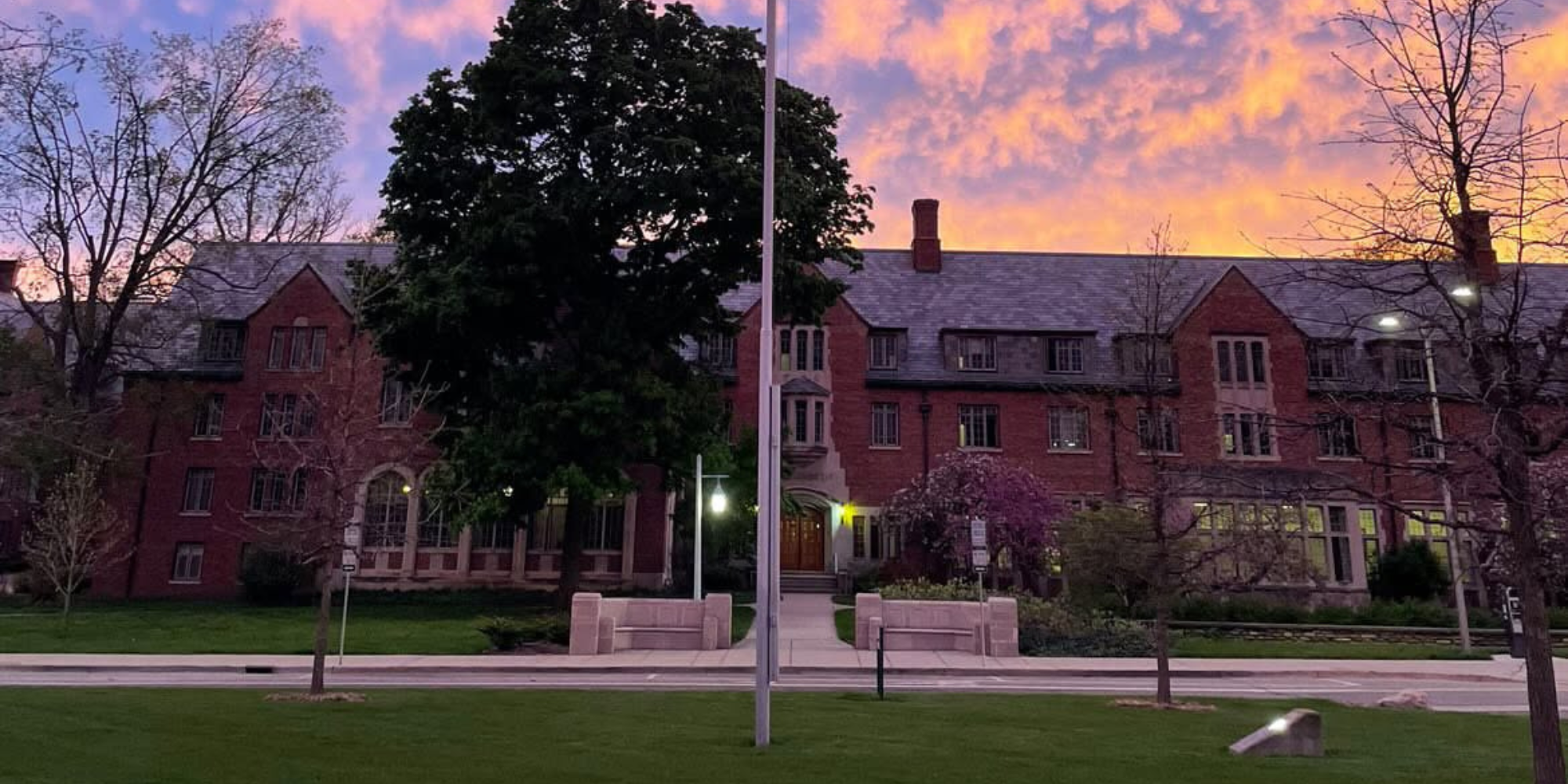Michigan State University (MSU) is facing a financial storm that’s hitting home for communities across Michigan. In a move that has many locals concerned, MSU has announced it will trim its budget by 9% over the next two years, a plan that unfortunately includes laying off staff and faculty members amid a broader cost-cutting effort. These job cuts come as part of MSU’s response to a perfect storm of rising costs and uncertain funding, and the news has folks from East Lansing to Metro Detroit asking: Why is this happening, and what does it mean for our community?
In this article, we’ll break down why MSU is making these cuts, how they plan to do it, and what it means for students, families, and our region. Written in the voice of a lifelong Michigander and Metro Detroit expert, we’ll dig into the local context behind the headlines. Let’s explore the story behind MSU’s budget crisis and why even those of us here in Metro Detroit should pay attention.
 Michigan State University, Facebook
Michigan State University, Facebook
Why MSU Is Facing a Budget Crunch
MSU’s financial challenges aren’t due to one single factor; it’s a convergence of external pressures hitting all at once. University leaders have pointed to several key reasons why budgets are so tight:
- Soaring Employee Healthcare Costs: The university’s costs to provide health insurance and benefits to employees have jumped by double digits in recent years. These rising healthcare expenses are straining MSU’s finances, much like many Michigan businesses and families feeling the pinch of higher medical costs.
- Inflation on Everyday Operations: From utility bills to classroom supplies, inflation has driven up operating expenses across the board. Just as Metro Detroit households have noticed higher prices at the grocery store and gas pump, MSU is paying more to keep the lights on and campus services running.
- Federal Funding Cuts: MSU expects to receive less money from the federal government going forward. This includes cuts to research grants and other federal programs that the university relies on. In fact, MSU has reportedly lost over $80 million in federal research funding in recent years due to nationwide budget reductions. Such losses hit research universities hard, forcing them to tighten belts.
- Fewer International Students: Recent restrictions and uncertainties around international student enrollments mean fewer global students on campus. International students often pay higher tuition rates, so a drop in their numbers translates to less revenue for MSU. (It’s worth noting that about 72% of MSU’s students are Michigan residents, but the out-of-state and international students are an important part of the budget mix.)
- State Budget Uncertainty: Lansing’s ongoing budget debates have added to MSU’s worries. There were significant proposals to cut MSU’s state funding by double digits as legislators negotiated Michigan’s next budget. For example, one plan in the state House sought to slash MSU’s state appropriation by 18% (about $56 million), a huge hit that raised alarms for university officials. While that particular proposal was later softened after public pushback, MSU leaders have had to plan for the possibility of reduced state support amid political wrangling.
- Other Economic Pressures: Even global economic factors have played a role. University officials mentioned that new tariffs and trade pressures have increased the cost of equipment and materials in some of MSU’s operations. It’s a reminder that big-picture economics, from federal policy changes to international trade, can trickle down to impact a university’s bottom line.
All these factors combined have created a “budget crunch” at MSU, where expenses are climbing faster than revenues. As MSU’s Board Trustee Sandy Pierce summed it up at a recent meeting, “external pressures like health care costs, inflation, and funding cuts have converged on our operating costs”. In other words, MSU’s bills are higher, some income sources are lower, and the university must adapt.
If you’re curious how neighborhoods near major institutions shape local real estate demand, take a look at what’s happening in Detroit’s University District.
MSU’s Plan: Cutting 9% From the Budget
To navigate these challenges, MSU leadership is undertaking a two-year plan to reduce general fund spending by 9%. In practical terms, that means the university will trim around $85 million from its operating budget over the next couple of years. Here’s how the plan works:
- Phased Budget Reductions: MSU is implementing a 6% budget cut in the current fiscal year and an additional 3% cut next year. Added together, that achieves the 9% reduction goal. Every college, department, and administrative unit has been asked to find savings in their budgets totaling that amount. (MSU’s general fund, which covers most academic and operational expenses, is roughly $1.7–$1.8 billion, so a 9% cut is a significant belt-tightening across the board.)
- Non-Personnel Cuts First: Campus leaders were instructed to tighten their belts in areas that don’t involve firing people, as a first step. Many units have slashed travel budgets, delayed or canceled vendor contracts, and trimmed programs deemed non-essential. They’ve also been holding off on new hires, leaving many vacant staff positions unfilled to save money. These moves were intended to minimize direct impacts on people’s jobs at the outset.
- Now, Staff and Faculty Cuts: Despite those efforts, MSU’s president acknowledged that some workforce reductions are unavoidable. The next phase of the plan does include eliminating filled positions in various colleges and departments. In other words, actual people will be laid off. The extent of these job cuts will vary by unit; some departments might consolidate roles or cut a few positions, while others might see deeper reductions, depending on their budget situations. MSU hasn’t announced a specific number of layoffs publicly, but affected employees began to be notified in early July and that process will continue over the summer. Some layoffs are effective immediately, while others (especially in unionized roles) will happen with a required notice period of 60 days or more.
- Prioritizing Essential Services: Importantly, certain critical areas are off-limits or being protected from cuts. MSU has exempted student financial aid, employee benefit programs (like health insurance and retirement contributions), utilities, and core academic software and library resources from these reductions, according to university officials. They don’t want cost-cutting to undermine student scholarships or the basic operations that keep campus running. MSU also insists that public safety (campus police), food services, and payroll will be maintained at necessary levels despite budget cuts. These are backbone services that students and staff rely on daily, and MSU knows they must stay intact for safety and stability.
- Voluntary Measures and Support: To reduce the need for involuntary layoffs, MSU is also pursuing voluntary attrition and retirement incentives. The university is working on potential voluntary retirement buyout plans for some tenured faculty, essentially offering senior professors who are near retirement an attractive package to step away early, which opens up budget space. Moreover, MSU has promised to work closely with employee unions during this process and to provide support for those who do lose jobs. Outplacement services (career counseling, job search help) and an Employee Assistance Program for confidential counseling are being offered to all impacted employees. The goal is to treat people with respect and help them land on their feet elsewhere if their position is eliminated.
By cutting back on “nice to have” expenses and unfortunately even some “need to have” staff positions, MSU aims to save enough money to weather this budget crisis. President Kevin Guskiewicz put it bluntly in his message to campus: “some workforce reductions are unavoidable to situate us to navigate our challenges and opportunities.” It’s a tough pill to swallow, but university leadership believes these hard choices now will “bolster the financial resilience” of MSU for the years ahead.
.png) Michigan State University, Facebook
Michigan State University, Facebook
Protecting Students and the Spartan Experience
A top concern for families and students is how these cuts will impact the classroom and campus life. The good news is MSU’s leadership has repeatedly stressed a commitment to protecting the student experience even as budgets shrink. Here’s what MSU says (and what we know) about keeping education on track:
- Academics and Classes: MSU insists that courses, instruction quality, and the “Spartan student experience” will not be compromised by the budget cuts. The university is adamant about maintaining a “high-quality, high-value education” for students. This means departments are doing their best to ensure required classes are still offered and that students can get the support they need to graduate on time. Provost and academic leaders have been reviewing plans to consolidate or streamline some programs without axing core classes. So, if you have a Spartan in your family, the administration wants you to know their classes should still be there and their degree progress shouldn’t be derailed by these cuts.
- Campus Services: Essential student services are being safeguarded. Campus safety (MSU Police), dining and housing services, and payroll operations will remain fully functional. No one wants to see dining halls closed or fewer safety patrols, and MSU has committed to keeping vital services at “necessary levels” to serve a large campus community. Students should still feel safe, fed, and supported on campus just as before. Other support offices (health centers, counseling, etc.) are also expected to stay open, though they, like all units, are likely finding small ways to save money without cutting service hours.
- Tuition and Financial Aid: To help address the budget shortfall, MSU’s Board of Trustees approved a tuition increase of 4.5% for the upcoming academic year. For an in-state undergraduate student, that works out to roughly $399 more per semester (about $798 more for the year) in tuition costs. While no student or parent likes to hear about tuition going up, MSU points out that this increase is in line with a statewide cap on tuition hikes (the state set 4.5% as the maximum that public universities could raise tuition for next year). In fact, over the past decade, MSU had the lowest tuition increases of any public university in Michigan, they tried hard to keep college affordable year after year. But with inflation and funding pressures now, a moderate increase became necessary. The silver lining is that MSU is also boosting financial aid to help offset costs: the new budget adds about $9 million more to student financial aid programs. So, while students will pay a bit more, more help is available for those who need it. The university’s message is that it “will maintain the accessibility of an MSU education” despite these challenges.
- No Cuts to Scholarships or Libraries: As mentioned earlier, MSU made a point to exclude certain student-centered areas from any budget slashing. Scholarships and need-based financial aid are protected, meaning those awards won’t be reduced due to the cuts. Library resources and academic software subscriptions, crucial for student research and studying, are also shielded from cuts. MSU didn’t want to balance the budget on the backs of students’ learning resources. Academic advising and tutoring services are expected to continue as normal as well.
From the official standpoint, if all goes according to plan, a student on campus might barely notice these budget cuts in their day-to-day education. The lecture halls will still have professors at the podium, the cafeterias will still be serving lunch, and degrees will still carry the same Spartan value. “We are determined that budget changes still protect the Spartan student experience,” President Guskiewicz said emphatically.
That said, some in the community have voiced worries about indirect effects on students. For instance, will larger class sizes or more online course sections become the norm if fewer instructors are on staff? One MSU student, reacting to the news, expressed concern that if faculty positions are cut, “you’re told you’re taking over half your classes online because there’s not enough [professors]... I kind of think that’s unfair because I could go to an online school – I didn’t need to come here.” This student’s perspective highlights a fear that quality could slip if cost-cutting isn’t handled carefully. University leaders acknowledge the concern but maintain that ensuring academic quality is a top priority. Time will tell if MSU can truly deliver on the promise that students won’t feel a negative impact. For now, the plan is structured to keep the academic experience as whole as possible.
.png) Michigan State University, Facebook
Michigan State University, Facebook
Reactions from Faculty, Staff and the Community
News of layoffs and budget cuts at MSU has naturally stirred anxiety and discussion among faculty, staff, students, and alumni. This isn’t just a sterile financial exercise, it affects people’s livelihoods and the community’s confidence in the institution. Here’s a look at how different groups are responding:
- Faculty & Staff – Mixed feelings of resignation and concern. Many employees saw the writing on the wall back in the spring when MSU first warned of budget trouble. Angela Wilson, Chair of the MSU Faculty Senate, said it was “deeply saddening” to learn there will be layoffs, even though detailed plans weren’t widely shared with faculty. She noted that structural deficits are affecting universities nationwide and that these cuts at MSU may be an unfortunate sign of the times. In other words, professors understand that declining funding and higher costs are hitting many campuses, but it’s still hard to swallow when it happens to your campus. There’s also been some frustration about transparency, some faculty felt the budget-cutting process was rushed and that they weren’t adequately consulted on where to trim. Still, others quietly acknowledge that MSU may have had few alternatives but to tighten belts given the circumstances. Departments are bracing for doing more with less, and there’s concern about maintaining morale among remaining staff after colleagues are let go.
- Non-Tenure Track Faculty Union (UNTF) – Pushback and advocacy. The union representing MSU’s non-tenured teaching faculty has been outspoken. Victor Rodríguez-Pereira, president of UNTF, said the news of reductions “did not come as a surprise” but is nonetheless alarming. Non-tenure track instructors teach a huge portion of classes at MSU, and the union fears that cutting their ranks will increase the workload on those who remain and potentially harm the quality of instruction students receive. “MSU works because we do,” Rodríguez-Pereira pointed out, a reminder that it’s the frontline educators who keep the university running. The UNTF has launched a petition calling for a halt to the proposed reductions, citing confusion and frustration over what the union perceives as a lack of transparency about MSU’s finances. They want MSU to pause and reconsider, and to involve faculty more in crafting solutions. Additionally, faculty advocates (including union leaders) have questioned MSU’s spending priorities, noting that even as academic budgets are cut, the university has invested in new facilities and initiatives. “No one is talking about other areas of the budget we could cut… yet we have money to approve apartment complexes [and] a new gym,” Rodríguez-Pereira said, arguing that some projects “don’t directly support the educational mission” and perhaps should have been put on hold before trimming teaching staff. This critique taps into a broader faculty sentiment that academics should come first, especially in tough times.
- Students – Sympathy for staff and worry about education quality. Students haven’t been as vocal in an organized way, but individual students have expressed two main feelings: concern for the faculty/staff losing jobs (many students develop close relationships with mentors, advisors, or support staff and hate to see them go), and concern for how it might affect their education. As mentioned, some worry about larger class sizes or fewer course options. Others wonder if services like advising or tutoring might be stretched thin. On the whole, students seem to understand MSU’s position – they’ve heard about inflation and funding issues on the news, but there’s definitely a nervousness. No student wants their college experience diminished after paying higher tuition. Some student groups have even discussed organizing to ensure student voices are heard in the process, though the situation is evolving.
- Local Community & Alumni – Supportive but watching closely. Metro Detroit and the state of Michigan at large have a huge Spartan alumni base, plus countless families with kids at MSU or hoping to attend in the future. For many, MSU is “our” university just as U of M is, and news of trouble there hits close to home. The community reaction has been a mix of concern and hope. Local public media and businesses in mid-Michigan are directly feeling the impact: for example, MSU’s own PBS/NPR station WKAR had to cut staff positions as a result of these budget measures and pending federal funding losses. Shawn Turner, the general manager at WKAR, lamented losing great colleagues due to forces “outside of our control,” as the station faced a combination of the university’s cuts and federal budget challenges in public broadcasting. This is a concrete reminder that MSU’s belt-tightening ripples beyond campus – local jobs and services can be affected. Meanwhile, alumni have been sharing news articles and commentary on social media, with many expressing sadness for the employees being laid off and concern over MSU’s trajectory. At the same time, there’s a sense of “we’ve been through tough times before”. Michigan’s recent history, from the Great Recession to Detroit’s bankruptcy, has taught us to be resilient. Many alumni and community members are voicing trust that MSU’s leaders are making hard but necessary decisions. There’s also a rallying of support: calls to donate to student emergency funds, or simply Spartans reminding Spartans to stick together through the challenges.
In summary, the MSU community’s reaction is one of concern, cautious optimism, and a resolve to hold the university accountable. People understand the reasons behind the cuts, but they care deeply about how those cuts are carried out. As one faculty member noted, the real test will be in how MSU continues to serve its students and staff through this period; actions must match the promises.
For a deeper dive into how these proposed cuts took shape in Lansing, read our breakdown of Michigan’s higher ed budget showdown.
The Bigger Picture: Michigan’s Higher Ed at a Crossroads
Zooming out, Michigan State’s budget woes are not happening in isolation. Colleges and universities across Michigan and the nation are facing similar financial headwinds. It’s a challenging era for higher education, and MSU’s situation underscores trends that affect many institutions that Metro Detroit families interact with. Here are a few broader points to consider:
- Structural Challenges Nationwide: Angela Wilson (MSU’s faculty senate chair) hit on a key point: structural deficits are affecting universities nationwide. Declining college-age demographics in some regions, flat or reduced government funding, and higher costs (from technology to facilities to personnel) have created a squeeze. Even before this news from East Lansing, smaller Michigan colleges have been tightening budgets, freezing hiring, or even merging programs. The pandemic years also left many schools with unexpected costs and enrollment dips. In short, the financial model of higher ed is under stress everywhere. MSU is one of the largest public universities to make such cuts recently, but it likely won’t be the last.
- State Funding Priorities: Michigan, in particular, has had a rocky relationship with funding its public universities. State Representative Julie Brixie (D-East Lansing) noted that Michigan’s state support for higher education hasn’t kept up for decades, saying state government “has not kept up with funding higher ed over the past 30 years”. When adjusted for inflation, state funding per student at places like MSU and University of Michigan is significantly lower today than it was in the 1990s. Universities have filled the gap mostly by raising tuition over time, which shifts the burden to families. This year’s budget debate in Lansing brought that issue into sharp relief, one version of the state budget sought huge cuts to MSU and UM (partly for political reasons, tied to culture-war issues as mentioned earlier). While that extreme plan didn’t become reality, it highlighted how higher ed can become a political football. The final state budget (as of this writing) is still being ironed out by the governor and legislature, but universities are hoping for at least stable funding or modest increases to help relieve the pressure. The takeaway for Michiganders: decisions in Lansing have a direct impact on our public universities, so it’s worth paying attention to those debates.
- Federal Funding Uncertainty: At the federal level, recent moves have also created uncertainty for universities. The brief federal budget deal in 2025 led to cuts in domestic programs, including some research and outreach funding that flows to universities. MSU specifically cited expected cuts to agencies like USAID, USDA, and the National Science Foundation (NSF), all of which fund research at MSU, as reasons they must tighten their belt. One lawmaker estimated that the federal grant reductions could cost Michigan’s universities more than $200 million collectively in the near term. For a research powerhouse like MSU (which usually brings in nearly half a billion dollars in research awards), that’s a big deal. Less research funding not only affects budgets, but also the scientific advancements and innovations that come out of these institutions. It can even trickle down to fewer student research assistant jobs or less cutting-edge equipment on campus. In addition, federal immigration and visa policies influence international enrollments, which, as mentioned, affect tuition revenue. All this is to say, the federal government’s actions on funding and policy are a significant wildcard for universities. The current climate requires schools like MSU to be nimble and prepared for anything.
- Michigan’s Talent Pipeline and Economy: When a major university like MSU tightens its belt, there’s also an economic ripple effect. MSU is not only an education institution, it’s one of Michigan’s largest employers and a key player in our state’s economy. The university noted that MSU educates more Michigan residents than any other college and prepares graduates in sectors ranging from agriculture and healthcare to engineering and education. It’s a primary talent pipeline for Michigan’s workforce. Cuts at MSU, if not managed well, could have longer-term implications: for example, if fewer research programs run, that might mean fewer new startups or innovations spinning off into Michigan’s economy over time. Or if budget issues persist, top faculty might leave for other states, which could gradually impact the quality of education. These are long-term concerns, but very real, we all want MSU to continue producing skilled graduates who contribute to Metro Detroit’s industries and beyond. Lawmakers like Rep. Brixie have argued that investing in our public universities is investing in Michigan’s future prosperity. Many in the community agree that, even as MSU makes cuts now, the state and its citizens must not lose sight of the value these institutions bring. Supporting higher education (through funding, philanthropy, or simply championing their importance) remains crucial if we want to keep our best and brightest here in Michigan.
In summary, the challenges MSU is grappling with are a microcosm of broader trends. The hope is that this period of belt-tightening is temporary, a chance to reset and become more efficient, rather than the “new normal.” Other Michigan universities are surely watching MSU’s approach closely, perhaps as a test case for how to adapt in these fiscally tight times.
.png) Michigan State University, Facebook
Michigan State University, Facebook
Looking Ahead – A Neighborly Perspective and Advice
As MSU navigates this turbulence, it’s worth remembering that Michigan has been through ups and downs before, and we’ve learned a thing or two about resilience. From the perspective of a lifelong Michigander (and someone deeply involved in the Metro Detroit community), here are a few parting thoughts on what this all means and how we can move forward:
- Spartans Will, and Michigan Will, Too: The unofficial slogan “Spartans Will” speaks to the determination and spirit at MSU. Times are tough, but MSU is recalibrating for the future, not giving up. University leaders say these moves will “bolster the financial resilience [needed] to thrive in the years ahead”. The aim is to ensure MSU can continue excelling in education, research, and outreach for the next generation of students. As a community, it’s important we keep our confidence in our institutions even as they course-correct. Michigan’s public universities are a treasure; they’ve powered countless family futures (maybe yours or your neighbors’) and driven innovation in our state. We should continue to take pride in them and support them, attend campus events, donate if you’re able, advocate for higher ed funding, and cheer on those Spartan successes. By staying engaged, we help ensure that MSU emerges from this challenge strong and ready to serve Michigan for decades to come.
- Supporting Those Affected: Let’s not forget the human side of this story, our neighbors and friends who work at MSU. Several staff and faculty will be losing their jobs as part of these cuts, and that’s a painful reality. Here in Metro Detroit and across the state, we can extend a hand. If you know someone personally impacted, reach out to them; sometimes a kind word or networking assistance can make a big difference in their transition. MSU is offering outplacement help, but personal connections often open doors too. Michigan’s job market, especially in Southeast Michigan, might absorb some of these talented folks (for instance, a skilled IT worker or communications staffer from MSU might find a role at a Detroit company). As a community, let’s be open to hiring Spartan talent and valuing their skills. For those closer to East Lansing, there may be community drives or relief funds to support furloughed employees; consider contributing. This is what it means to be a community: when one institution has to make cuts, others can step up to cushion the landing for those affected.
- Families and Students, Stay Informed and Plan Ahead: If you’re a parent with a current or future college student, news like this can be unnerving. It’s wise to stay informed: keep an eye on communications from MSU about any changes in academic programs or support services. So far, MSU has been clear that students should see minimal disruption, but it’s always good to be in the loop. Financially, factor in that 4.5% tuition increase for this year, about $800 more, into your college budget. (Remember that MSU’s tuition increase was at the state’s cap; other Michigan universities are raising tuition similarly, around 4–5%, due to inflation and funding limits.) If you have questions about financial aid or tuition bills, don’t hesitate to contact MSU’s financial aid office; they have increased aid funding, and counselors can help explore available resources. Academically, students should continue to seek out advisors and mentors; even if some staffing is shuffled, MSU has pledged to keep student support available. In short, proactively communicate and plan, the university is still very much open for business and wants to help students succeed. And if you’re a high schooler or parent researching colleges, don’t write off MSU because of these budget headlines. The institution is taking steps to ensure its long-term health, and it remains a top-notch place to get an education. Ask the questions you need to, but know that every university has challenges; it’s how they address them that counts.
- For Metro Detroit, an Opportunity to Strengthen Ties: MSU’s situation reminds us how interconnected our state really is. Metro Detroit might be a bit over an hour from East Lansing, but the ties are strong; thousands of Metro Detroit families send students to MSU, and many MSU grads come back to Metro Detroit to work and live. We also have collaborative programs (for example, MSU’s College of Osteopathic Medicine has a site in Detroit, and the Extension programs serve communities in our region). With MSU in cost-cutting mode, Metro Detroit can be a partner and beneficiary. Our local businesses and institutions can look for partnership opportunities, perhaps tapping into MSU’s research expertise or offering internships to students if on-campus jobs are tighter. The goal is a symbiotic relationship: helping the university community while also enriching our own. As a local real estate and community expert, I’ve seen how strong educational institutions uplift nearby cities, they attract talent, drive innovation, and even boost property values over time by making the region more desirable. Ensuring MSU’s stability is in Metro Detroit’s interest. So let’s continue to foster that “one Michigan” mindset, where we root for each other’s success from Detroit to East Lansing to Ann Arbor and beyond.
- Speak Up for Higher Education: Finally, if you’re passionate about keeping college accessible and excellent in Michigan, now is a great time to make your voice heard. That could mean contacting your state representatives to support adequate higher ed funding, or simply joining the conversation at school board meetings, alumni events, or on community forums. The more we collectively emphasize the importance of education, the harder it is for policymakers to ignore. MSU’s current budget troubles shed light on how things like federal research cuts or state budget maneuvers have real impacts on our students and staff. By staying informed (hopefully articles like this help!) and engaging in dialogue, Metro Detroiters and Michiganders can influence the narrative. The message should be clear: we value our public universities and want to see them thrive.
If you’re planning a move or just exploring what life in Michigan looks like today, don’t miss our full guide to living in the Mitten.
Michigan State University’s budget cuts and job layoffs are undoubtedly tough news for the employees directly affected, for students and families who worry about the fallout, and for all of us who care about the institution. But amid the challenge, there’s a commitment to upholding what makes MSU great. This situation is being met with smart planning, community support, and a determination to not just save money, but to set MSU on a stronger course for the future.
As neighbors in the broader Michigan community, we can take this moment to educate, engage, and support one another. Budget crises come and go, but the core values of education, opportunity, and community endure. By staying informed and involved, we help ensure that MSU and all our Michigan schools continue to provide excellent education for our kids and drive economic vitality for our region.
If you have questions about how MSU’s changes might affect your family or our local area, or if you’re looking for ways to support those impacted, don’t hesitate to reach out. Whether it’s contacting university resources, speaking with local experts, or having a conversation with fellow alumni and neighbors, we thrive when we tackle challenges together. In true Michigan spirit, let’s face this budget storm head-on and look forward to sunnier days ahead for our Spartan community and the Great Lakes State.
Stay engaged and informed. If you’re an MSU stakeholder (student, parent, alum, or employee), keep an eye on official updates and don’t be afraid to ask questions. For community members, consider mentoring a recent grad or connecting someone affected by layoffs to a new opportunity. And for anyone seeking more personalized insight, whether about education decisions or even the broader Metro Detroit economic climate, feel free to reach out to a trusted local expert. We’re here to help our neighbors navigate change. Together, let’s ensure that Michigan’s future and MSU’s future remain bright. Go Green!
DON'T KEEP US A SECRET - SHARE WITH A FRIEND OR ON SOCIAL MEDIA!
THINKING OF MOVING TO Metro Detroit, OR LOOKING TO RELOCATE IN THE AREA? VIEW A LIST OF CURRENT HOMES FOR SALE BELOW.
Metro Detroit Homes for Sale
The Perna Team and Michael Perna are the best real estate agents in Metro Detroit and Ann Arbor. The Perna Team and Michael Perna have been hired as a real estate agent by hundreds of home owners to sell their homes in Metro Detroit and Ann Arbor.
The Perna Team were great to work with, and we’d absolutely recommend them to anyone buying a home in Metro Detroit. I even asked for a few of her business cards in case I run into someone who needs a realtor. Thanks again for everything!
Posted by Michael Perna on
.67.png)



















































Leave A Comment